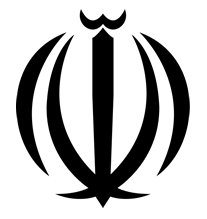Iran: Government
Key Figures
- Chief of State:
- Supreme Leader Ali Hoseini-Khamenei
- Head of Government:
- President Masoud Pezeshkian
Overview
- Government Name:
- Islamic Republic of Iran
- Constitution:
- Adopted: 1979; Constitution has been called a "hybrid" of "theocratic and democratic elements." While articles one and two vest sovereignty in God, article six "mandates popular elections for the presidency and the Majlis, or parliament."
- Government Type:
- Islamist Republic

Index of Economic Freedom
Country Risk Rating
Government Branches
| Main Powers | Election Process | Election Cycle 1 | |
|---|---|---|---|
| Executive | The supreme leader is the commander-in-chief of the armed forces and appoints several positions including judiciary, media networks, and commanders of military forces. The president is the highest state authority figure and is responsible for implementation of constitution, exercising executive powers, selecting government policy for legislature, and appointing the council of ministers. |
The supreme leader is appointed by an assembly of experts. The president is elected by absolute majority vote through a two-round system. |
Supreme leader: Life appointment; President: 4 years |
| Judicial | The supreme court is the highest court of the land and has jurisdiction over all constitutional cases. |
The supreme court president is appointed by the head of the supreme judicial council in consultation with the judges of the supreme court. Information regarding other judge appointments and tenures is not available. |
President of Supreme Court: 5 years; other judges: information not available |
| Legislative | The Islamic consultative assembly drafts legislation and ratifies treaties. |
The Islamic consultative assembly has 290 members who are elected by qualified plurality vote. |
4 years |
Regional Trade Blocs
No Regional Trade BlocsInternational Organization Participation [2]
Environmental Agreements [3]
Tax Information [2]
- Tax Authority:
- Information not available
- Tax Name:
- Information not available
Sources:
- ElectionGuide http://www.electionguide.org/
- EY, http://www.ey.com
- CIA World Factbook, https://www.cia.gov/the-world-factbook/
- U.S. Bilateral Relations Fact Sheets http://www.state.gov/r/pa/ei/bgn/


